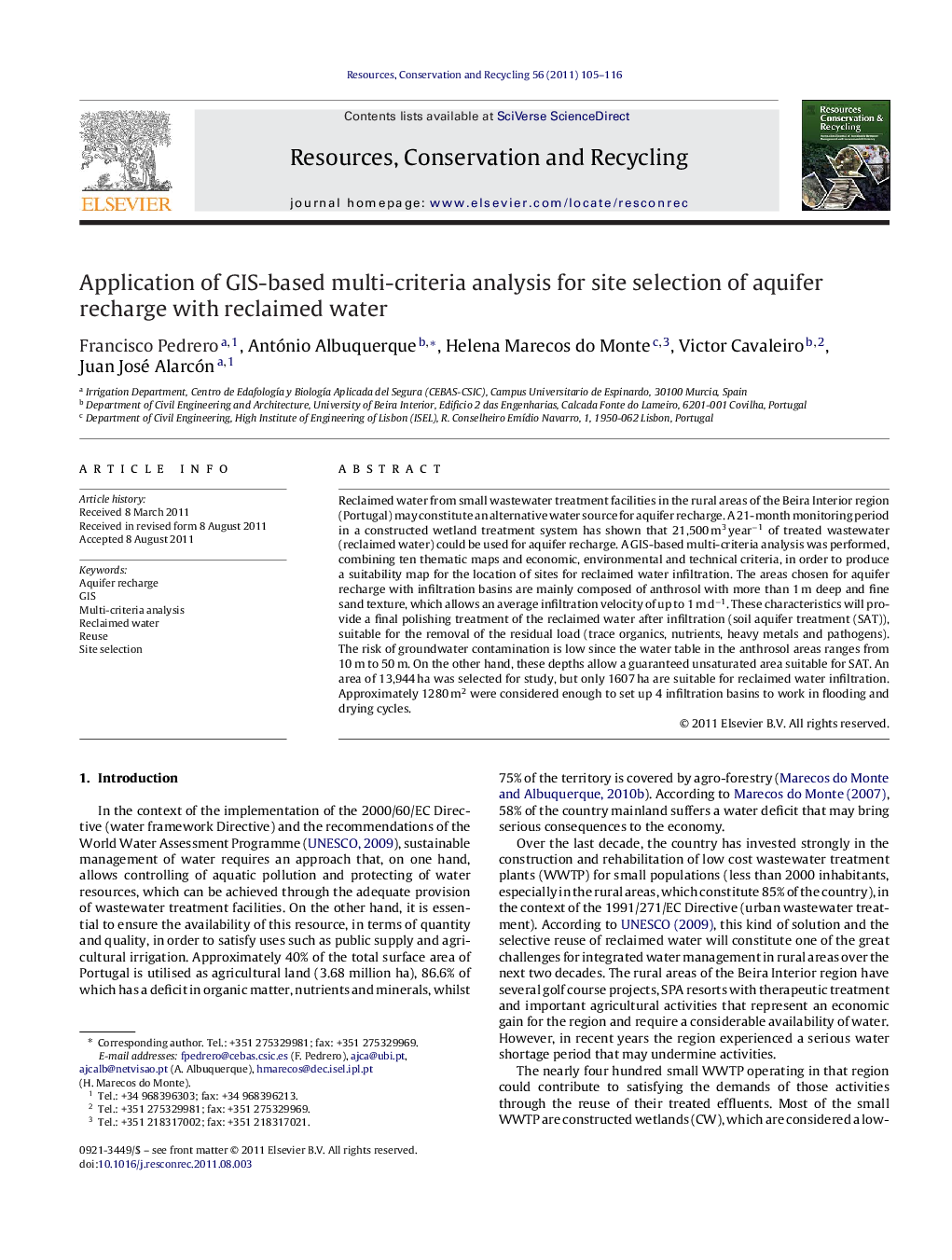| Article ID | Journal | Published Year | Pages | File Type |
|---|---|---|---|---|
| 1063348 | Resources, Conservation and Recycling | 2011 | 12 Pages |
Reclaimed water from small wastewater treatment facilities in the rural areas of the Beira Interior region (Portugal) may constitute an alternative water source for aquifer recharge. A 21-month monitoring period in a constructed wetland treatment system has shown that 21,500 m3 year−1 of treated wastewater (reclaimed water) could be used for aquifer recharge. A GIS-based multi-criteria analysis was performed, combining ten thematic maps and economic, environmental and technical criteria, in order to produce a suitability map for the location of sites for reclaimed water infiltration. The areas chosen for aquifer recharge with infiltration basins are mainly composed of anthrosol with more than 1 m deep and fine sand texture, which allows an average infiltration velocity of up to 1 m d−1. These characteristics will provide a final polishing treatment of the reclaimed water after infiltration (soil aquifer treatment (SAT)), suitable for the removal of the residual load (trace organics, nutrients, heavy metals and pathogens). The risk of groundwater contamination is low since the water table in the anthrosol areas ranges from 10 m to 50 m. On the other hand, these depths allow a guaranteed unsaturated area suitable for SAT. An area of 13,944 ha was selected for study, but only 1607 ha are suitable for reclaimed water infiltration. Approximately 1280 m2 were considered enough to set up 4 infiltration basins to work in flooding and drying cycles.
► Suitability map for site location of infiltration basins for aquifer recharge. ► Aquifer recharge with reclaimed water from a rural constructed wetland system. ► Procedure potentially valuable in areas currently subject to summer drought. ► GIS is a very advantageous tool for implementing reuse practices.
